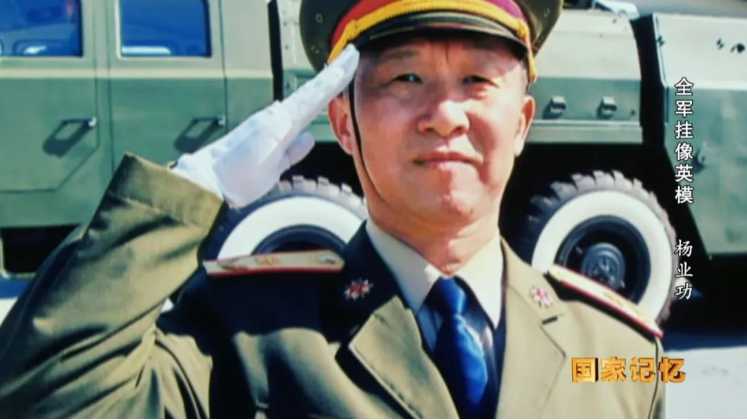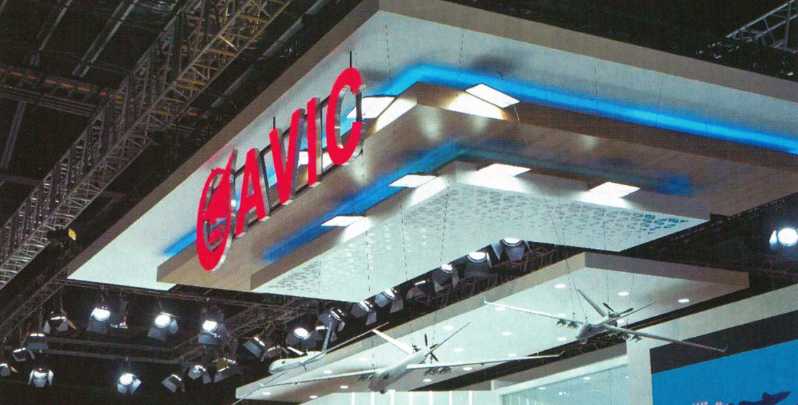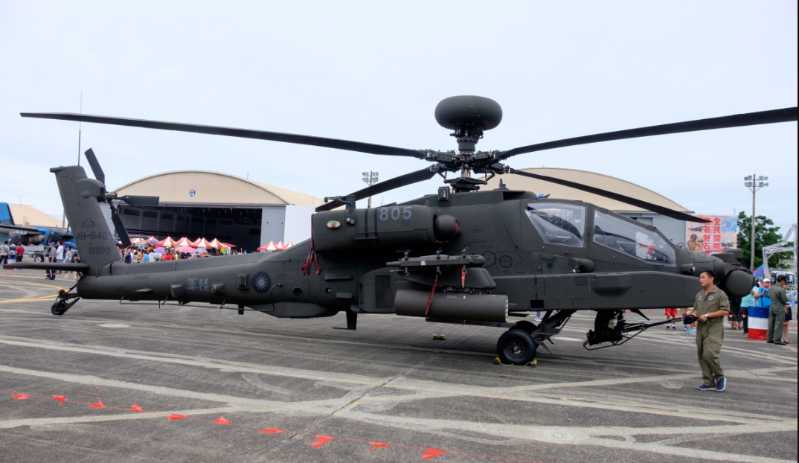This year marks the 20th anniversary of the death of Yang Yegong, a model hero whose portrait is hung in the whole army. This article would like to review the glorious deeds of this model commander who faithfully fulfilled his mission, so as to commemorate the hero model, continue the spirit of the predecessors, and draw strength for progress.

Ordered to form a unit
In the 1990s, conventional missiles had demonstrated sufficient strike power and deterrence in the "missile attack on the city" during the Iran-Iraq War. Neighboring countries and regions of my country were also actively developing related weapons and equipment. In order to adapt to its trend of entering the field of conventional warfare and the need to complete military struggle preparations, the Second Artillery Corps began to focus on the development of conventional missiles. Based on the future development direction of the troops, Ge Dongsheng, deputy commander of a base of the Second Artillery Corps, actively asked his superiors for the task of testing conventional missiles for the troops, but at the same time he also took over the goal proposed by the Second Artillery Corps Party Committee of "being ready to fight at any time and ready to perform emergency tasks at any time in three years."
To achieve this goal, a base of the Second Artillery Corps decided to let the troops intervene in the test and production stage of new weapons to train technical backbones and strive to synchronize the launch capabilities of the troops with the launch capabilities of the test troops of the National Defense Science and Technology Commission, so as to familiarize themselves with the equipment as soon as possible and quickly form combat effectiveness after a little training after receiving the equipment. To this end, they sent a letter to the affiliated brigades and regiments asking them to recommend candidates for the training team. Finally, on August 1, 1991, 11 soldiers and 10 college student officers were selected to form a conventional missile advanced training team. Yang Yegong, then deputy chief of staff of a base of the Second Artillery Corps, was ordered to lead the officers and soldiers of the training team to form our army’s first modern combat unit. He solemnly swore: "This is the great trust of the Party and the people in me. I swear as a Communist Party member to resolutely complete the task and never bring shame to the Party and the army." From then on, the officers and soldiers of the training team living in the mountains built a "startup gate" with logs and pine branches. Under the leadership of Yang Yegong, they went to major domestic missile manufacturers and scientific research institutes to study and record, wrote professional tutorials from scratch, used bamboo poles to mark the length and width of the launch vehicle, used straw ropes to simulate cable line diagrams, used benches to simulate launch positions, and used cartons to simulate missile operating panels. In the difficult environment, they gradually explored and summarized the construction ideas, training models and management methods of conventional missile forces.
In the winter of 1992, after asking for instructions from the base, Yang Yegong, deputy chief of staff of the base, accompanied the officers and soldiers of the first batch of backbone training teams of the conventional missile training team by train to the northwest for conventional missile low-temperature experimental training. After entering the northwest wilderness, Yang Yegong led the troops to carry equipment and pull for three or four hours every day in the Gobi Desert at nearly minus 30 degrees Celsius. The officers and soldiers felt sorry for his old age and advised him to stay in the base camp to command, but he believed that the first-hand information must be obtained by himself, and insisted on participating in field operations on this basis. When there was no field operation at night, Yang Yegong also deduced the combat process of conventional missiles with the battalion commander Gao Jin. In addition, he insisted on following the work for 15 consecutive days with a serious cold, and personally recorded a large amount of experimental data on the spot, which provided accurate scientific basis for the finalization and rapid equipment of conventional missiles and troops, and explored a set of important experience in missile weapons in combat under high-cold environmental conditions.
Since the establishment of the conventional missile test and training team, the test and training team has accelerated the pace of construction under the guidance of the "six priorities" proposed by the Party Committee of the First Artillery Corps for the unit, held a special office meeting every month to study the difficulties and problems in the construction of the unit, and transformed an abandoned cave into an equipment warehouse under the background of urgent matters and special matters. In April 1992, the test and training team successfully received the first batch of equipment. On November 20 of the same year, the Party Committee of a certain base announced the establishment of the preparatory group for the first conventional missile brigade in my country. Yang Yegong, who had made a "military order" for this, devoted himself to the preparatory work. In order to finalize the DF-15 and equip the troops as soon as possible, he and the officers and soldiers participated in many extreme tasks such as high temperature, low temperature, rain, and continuous transportation of missiles, fought for more than 700 days and nights, and traveled more than 10,000 kilometers from north to south. One day this year, a convoy carrying officers and soldiers of the "First Battalion of Conventional Missiles" drove into the depths of the mountains. The officers and soldiers of the entire battalion set up camp in a machinery factory that had been abandoned for many years, allowing the "seeds" of the conventional missile force to take root and grow here. On April 5, 1993, the unit was formally organized into a brigade and became the first conventional missile unit of our army. On November 23 of that year, under the leadership of Yang Yegong, the commander of the launch site, the unit fired the first missile and hit the target accurately, successfully completing the superior’s order of "forming in the same year, forming combat effectiveness in the same year, and successfully completing the live-fire launch mission in the same year". The unit fully formed combat capabilities in 1994 and first showed its sword in the "Excalibur-95" military deterrence operation in the summer of 1995.
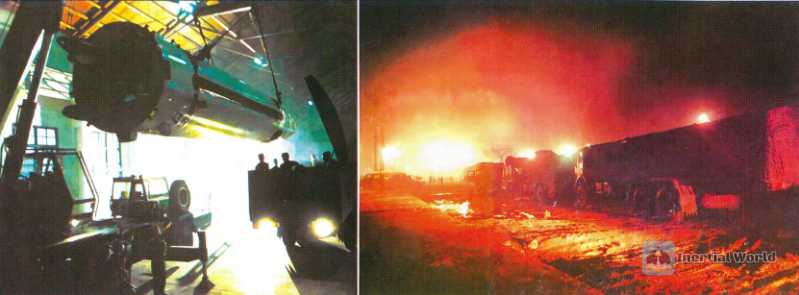
Participate in military deterrence operations
In July 1995, on the 29th anniversary of the establishment of the Second Artillery, the Second Artillery headquarters did not have a celebratory atmosphere at all. This was because the Central Military Commission officially issued an order at 2:30 pm on July 16, deciding to conduct military exercises in the waters around Taiwan from July 21 to 28, 1995. Before the CMC officially issued the combat order, the pre-war preparations for this operation had already begun. If we turn back the clock a month ago, we can review this tortuous preparation process. On a certain day in June, after receiving the decision to conduct military exercises in the waters around Taiwan in the meeting room of the General Staff Operations Department, the Second Artillery Commander Yang Guoliang quickly conveyed the CMC’s instructions on conducting military exercises in the meeting room of the Second Artillery Office Building. The Second Artillery Party Committee immediately decided to send an advance team to conduct on-site surveys, planning and supervision, and to do a good job in the selection of combat areas, the formulation of troop deployment plans, the selection and construction of equipment loading and unloading facilities, and the storage of weapons. Preparatory work for the macro-planning and specific implementation.
Among the many commanders sent by the Second Artillery Corps, Yang Yegong can be regarded as a role model who leads by example. On the day he received the mission, he rushed to the assembly area to survey the terrain. Under the supervision of Zhu Kunling, deputy chief of staff of the Second Artillery Corps, he selected positions together with Gao Jin, commander of a battalion. He even worked non-stop for two days and two nights, traveling back and forth between four places for selection. He conducted field surveys during the day and worked on maps at night, designing and constructing at the same time. The off-road vehicle he took drove hundreds of kilometers on mountain roads day and night. He usually slept only two or three hours a day, and sometimes he even worked all night long. Many people advised him to pay attention to rest, but he He just said: "Now is not the time to rest. The people of the whole country are watching us, and the officers and soldiers are watching us. We can only speed up, speed up, and speed up again. We cannot slack off for a moment!" He insisted on organizing the troops to repair the launch pad despite his illness in the hot summer. Even if he fainted at the site of the construction, he was most concerned about the progress of the project after waking up. He asked the comrades around him who cared about him to return to the site to continue working. Under his leadership, the troops built the launch pad in just seven days, which usually took more than a month to repair. Such outstanding achievements were created by the officers and soldiers with firm beliefs and unity. From the Second Artillery Command Post opened in a brigade camp to the launch site in the deep mountains and dense forests, every commander and fighter performed their duties with a high sense of responsibility and mission in pre-war preparations. They always kept in mind the trust of the Party and the people and went all out to carry out this sacred task.
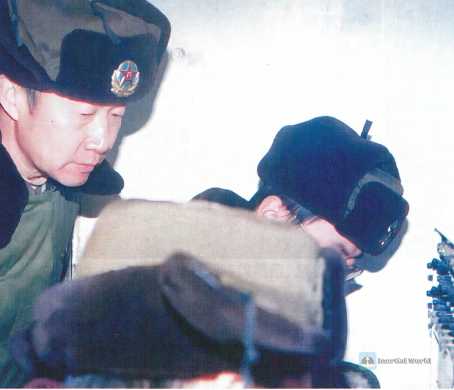
On the night of July 19, the conference room in a warehouse in a certain brigade camp was set up as a temporary command post. Commander Yang Guoliang and Political Commissar Sui Yongju, who planned the military operation, organized a combat meeting. Chief of Staff Zhao Xijun took the lead in speaking at the meeting and introduced the combat plan for the first wave of assaults. That is, according to the instructions of the Military Commission, two waves were launched on July 21 and 22, with two missiles in each wave, and the time was set between midnight and six o’clock. The specific time of each time was determined according to the situation at the time. This combat plan was widely recognized.
On the evening of July 20, the Second Artillery’s basic command post conveyed to Yang Guoliang the instructions of Liu Huaqing, Vice Chairman of the Military Commission: "It is better for the Second Artillery to launch three waves." It also conveyed the telephone concern of the then Chairman of the Military Commission: "How is the Second Artillery’s launch control? Now the focus is on the Second Artillery." Yang Guoliang immediately responded: "Please rest assured, Chief of the Military Commission, we are ready.
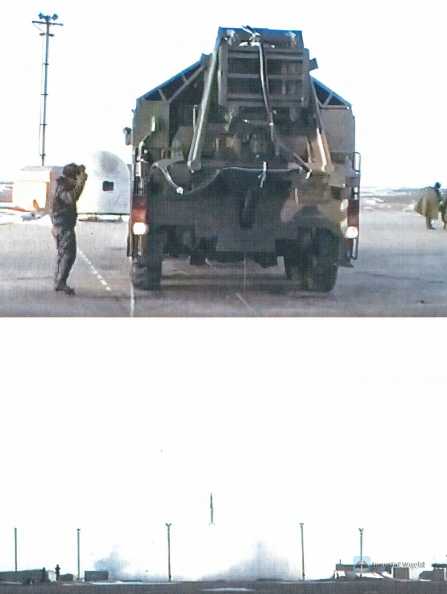
On the evening of July 20, after the Second Artillery’s chief sent off the officers and soldiers who were to carry out the launch mission that night, Zhang Qihua, the commander of the "Conventional Missile First Brigade", ordered to set off, and the buglers of several launch units immediately boarded the launch vehicle and advanced to the launch position. Midnight was approaching. After three red flares flashed over the launch site, Gao Jin issued a departure order to Sun Jinming, the company commander of the first company of the first battalion. The launch pad soon arrived at the launch site several kilometers away. After the specified launch time, Gao Jin, who was in charge of the gate, took over the command on the site and issued a command order to Sun Jinming. The buglers operated on the site. Five minutes of preparation, began to clear the site; three minutes of preparation, the last two buglers on the launch site retreated to the bunker. Gao Jin was the last to retreat to the bunker after saluting the missile. Yang Yegong, the commander-in-chief on the scene, also insisted on staying in a temporary simple bunker less than 100 meters away from the launch pad for close command. He said to the officers and soldiers: "This mission is special, I must stay." One minute of preparation, turn on the power, the turn-on light is on, turn on the launch safety, and the launch safety light is on. At 0:30 a.m. on July 21, Jin Ming issued the "ignition" order to the No. 1 controller, and the Dongfeng-15 missile with the best test technology status immediately took off into the air with a tail flame and flew towards the designated sea area in the East China Sea. The officers and soldiers in the bunkers and foxholes watched the missile break through the sky and fly away, rejoicing for the successful launch. Yang Yegong, who was squatting in the front bunker, watched the missile take off into the air with a happy smile. After receiving the measurement and control data sent back by the end zone maritime detection team, he excitedly said: "With us here, please rest assured, the motherland and the people!" As the news of "the missile accurately hit the predetermined target" came back, the head of the Second Artillery Corps and the Chief of the General Staff expressed congratulations and condolences to all officers and soldiers who participated in the launch. After the first missile was successfully launched, the launcher of the Second Battalion, the Third Company, which was originally responsible for launching the second missile, had a sudden failure. In order not to delay the launch window, Yang Yegong decisively decided to let the launcher of the First Battalion, the First Company, the Second Platoon, which was the backup unit, take over the launch. At 5:30 a.m., the launcher of the First Battalion, the First Company, the Second Platoon, under the command of Wang Baocai, successfully launched the second missile and successfully completed the task within the launch window specified by the Military Commission.

In the early morning of July 22, the second wave of launches entered preparations. The launch missions were undertaken by the 5th Company of the 3rd Battalion and the 7th Company of the 3rd Battalion respectively. At 0:30, the 1st row launcher of the 5th Company of the 3rd Battalion commanded by Xia Xiaoping successfully launched the first missile. At 2:30, the 1st row launcher of the 7th Company commanded by Li Zhenglian successfully launched the second missile. Both missiles successfully hit the target. That night, the Chief of the General Staff and the Minister of National Defense called to congratulate. At 2:30 on July 24, the launcher of the 3rd Company of the 2nd Battalion commanded by Zhou Xiaolin successfully launched the third missile. At 4:30, the launcher commanded by Li Jianjun successfully launched the fourth missile. During the entire "Excalibur-95" military deterrence operation, the participating troops launched a total of six DF-15 missiles into the designated waters of the East China Sea, demonstrating the firm determination of the CPC Central Committee and the Central Military Commission to safeguard national sovereignty and territorial integrity with all hits, and demonstrated the national prestige and military power, which satisfied the commanders of the three armed forces, excited the whole country, and amazed the world.
After the exercise, Yang Yegong, who was responsible for the position selection, launch plan formulation, and on-site organization and command during the exercise, collapsed from exhaustion and received intravenous fluids in the tent of the field clinic for a day. On July 24, the Second Artillery held a meeting to withdraw from the site. On July 25, the then Chairman of the Military Commission listened to the report of the Chief of General Staff Zhang Wannian on the launch exercise and said: "This was done well, it boosted our morale and we did a good job. After the launch, we should sum up the experience, encourage everyone to make persistent efforts, carry forward the achievements, and praise the advanced." Also on July 25, a victory celebration meeting was held, Gao Jin, Sun Jinming, Zhou Xiaolin, Xia Xiaoping and others were awarded first-class merit, and Yang Yegong was awarded second-class merit.
Participate in joint exercises
In 1996, with the situation in the Taiwan Strait heating up, a joint exercise coordination meeting of the Army, Navy, Air Force and the Second Artillery was held in the conference room of the General Staff Operations Department. The meeting decided to conduct joint exercises in the waters around Taiwan. Yang Guoliang introduced a series of support issues such as participating troops, weapons and equipment, target area selection, firepower strikes, communications, ballistic measurement, meteorology and logistics support at the meeting. Liu Huaqing sighed at the end of the meeting: "This is the first time such an exercise has been established since the founding of the People’s Republic of China. The Second Artillery has the greatest deterrent force. We must go all out and work with comrades from the Ministry of Aerospace to carefully check the missiles to ensure that they are foolproof and absolutely reliable, and successfully complete this mission."
In order to successfully complete this launch mission that was extremely difficult to organize and coordinate, the commanders quickly formulated four launch plans under four weather conditions after arriving at the exercise action area. In accordance with the instructions of the head of the Military Commission on "careful preparation, choosing the best weather, and achieving the best results", while implementing various meteorological guarantees, they revised and improved the plan according to the actual situation on the scene, and drafted two backup plans and special situation handling plans for no observation window and short launch window. After being reported to the Military Commission and the headquarters for approval, the command post finally decided that the exercise would adopt the "follow-up backup, cross-launch" method, with each missile launch interval of several minutes. For various meteorological conditions, multiple launch plans were adopted respectively, and the specific launch plan was determined according to the local meteorological window. Since this exercise was in the rainy season and the meteorological conditions in the mountainous area were complex, the tactics of timely seizing the short "window" to complete the launch mission were also vividly called "waiting for the rabbit by the tree" by the commanders and fighters. Yang Yegong also participated in this exercise and played a certain role in its organization process.
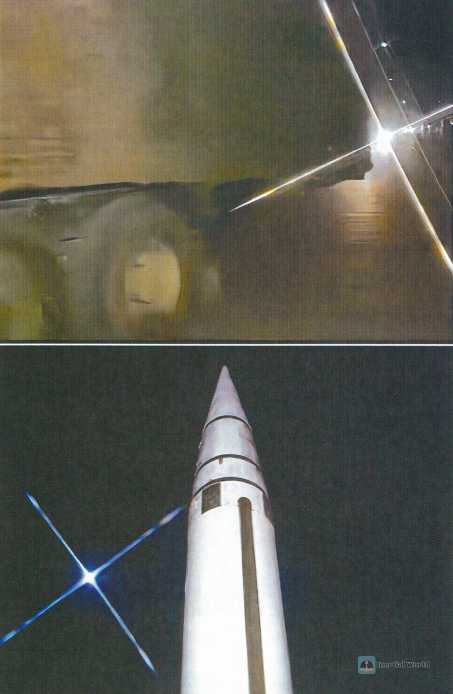
The exercise was held from March 8 to March 15, 1996, before the first Taiwan regional leader election, aiming to deter the separatist forces of "Taiwan independence". It was the rainy season at that time. In order to better complete the task, Yang Guoliang consulted with meteorological experts and decided to seize the launch window of about two hours after 0:00 on March 8 to launch the missiles. This suggestion was quickly approved by the head of the Military Commission, and the "Conventional Missile Brigade-1" participated in the exercise. At 0:10 a.m. on March 8, the launcher of the first row of the third company of the second battalion commanded by Zhou Xiaolin successfully launched the first DF-15 missile; at 1:10 a.m., the launcher of the first row of the fifth company of the third battalion commanded by Xia Xiaoping successfully launched the second DF-15; at 1:58 a.m., the launcher of the second row of the third company of the second battalion commanded by Zhou Xiaolin launched the third DF-15, and the first wave of launches ended. Our participating troops organized standby several times according to the previous "wait and see" tactics to prepare for the second wave of launches.
After 2 a.m. on March 8, the weather became as cloudy and rainy as predicted by meteorological experts. In order to meet the requirements of the Central Military Commission to report accurate missile accuracy every time, the participating troops could only lie dormant in the dense forests of the south and wait for the weather to improve, as the observation equipment did not have the ability to observe all-weather. In the distant Pacific Ocean, two US aircraft carrier battle groups are heading towards the Taiwan Strait. They are trying to deter my country from continuing to launch missiles by approaching the strait with their aircraft carriers, but my country will crush their fantasy with practical actions. On the evening of March 12, the meteorological unit predicted that there would be a few clouds at midnight. The Second Artillery Command Post quickly determined the launch plan and ordered the two launch units of the "First Brigade of Conventional Missiles" to set out from the standby positions and occupy the launch positions within the scheduled time and wait for launch. Pan Riyuan, deputy commander of the Second Artillery, personally went to the front line and took command with Huang Cisheng, Minister of Equipment. At 5:45 on March 13, when the weather continued to not improve, the first missile of the second wave was still ignited and launched, passing through the rain curtain and clouds with a huge roar, and finally successfully landed in the designated sea area. At 18:00 on March 15, Xinhua News Agency was authorized to announce that the exercise had ended. In this exercise conducted from March 8 to 15, 1996, our army launched four Dongfeng-15 missiles into the designated waters of the East China Sea and the South China Sea, and with all of them hitting the target, it effectively deterred the "Taiwan independence" separatist forces. After the exercise, the Second Artillery Force focused on accelerating the improvement of combat effectiveness and entered the fast lane of development. Excellent commanders such as Yang Yegong played an important role in this process.
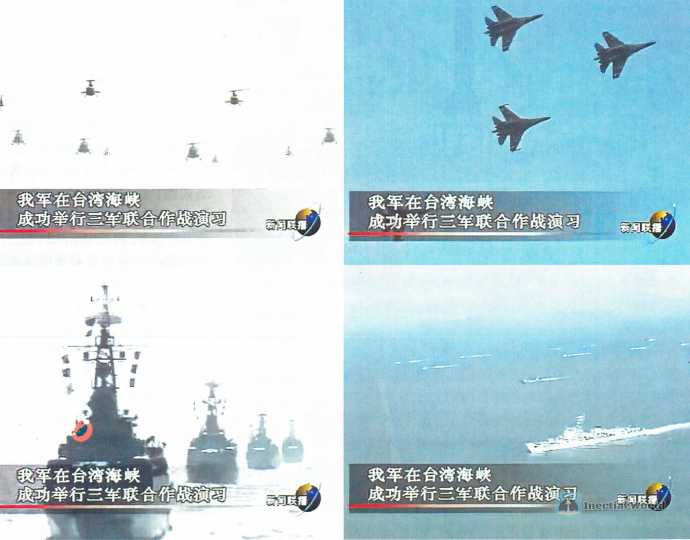
Promote scientific and technological training
In June 1999, Yang Yegong, who had participated in the "Excalibur-95" and "Joint-96" military exercises, was promoted to the base commander. He made an impassioned speech at the handover meeting between the new and old commanders: "The organization put me in this position. I must devote all my energy to the construction of the army. If I fail to fulfill the mission of winning the battle, I will become a sinner for all eternity." During the 50th anniversary military parade on October 1, 1999, Yang Yegong, as the captain of the missile formation, led four missile formations through Tiananmen Square in a magnificent manner to accept the review of the motherland and the people. The high-spirited posture of the missile formation and the heroic appearance of this "missile commander" were forever recorded in the history of the Republic at this moment. After the streamlining and reorganization in the "Ninth Five-Year Plan", the Second Artillery Corps vigorously developed conventional missile combat forces and improved supporting support forces. The affiliated colleges and universities also increased training tasks and staffing quotas to provide more talents for the troops. The command automation system that can meet the combat troops’ combat readiness tasks, military training and daily management needs has also been basically established during the "Ninth Five-Year Plan". This series of historical opportunities has put the construction and development of Yang Yegong’s base on the fast track. Against this background, Yang Yegong proposed at the enlarged meeting of the Party Committee after taking office: The motherland and the people have high hopes for us. As the "fist" force for military struggle preparation, we must really prepare, take "decisive battle and decisive victory" as the highest goal pursued by the troops, and do a good job in all work with a spirit of seizing the day.
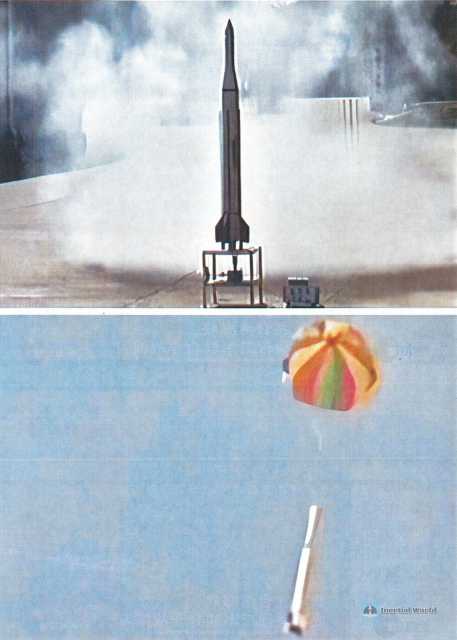
In the mass training craze of "technological training, everything for winning", Yang Yegong strongly supported a certain brigade’s initiative to implement full-system, full-element, full-staff, full-procedure, and full-equipment training every month within the Second Artillery Corps, and strived to promote the training and overall construction of the troops to be close to actual combat. Facing the people who were worried about the use of too much equipment and the possibility of accidents, he immediately stated: "As long as it is conducive to improving combat effectiveness, we must do it boldly, and I will take responsibility. Although the brigade organized troops to carry out full-element actual soldier and equipment training for the first time according to actual combat requirements, an equipment vehicle tilted due to the soft roadbed during driving, but Yang Yegong rushed to the training ground for a careful inspection and said to the brigade leader: "Safety work is indeed important, but passive safety in improving combat effectiveness is the greatest insecurity for the country. As long as you conduct scientific training and organize it strictly, you will eliminate accidents in the bud. "Under his encouragement, the brigade not only did not reduce the training content, but increased the difficulty of training, and also "bundled" the organization and command of the organs and various support elements together for training. He also helped the officers and soldiers of the brigade to plan the training links and scrutinize the training details, so that the training of each subject of the brigade was a complete success, and the military training was truly in line with actual combat. Soon after, this practice was fully promoted in the Second Artillery.

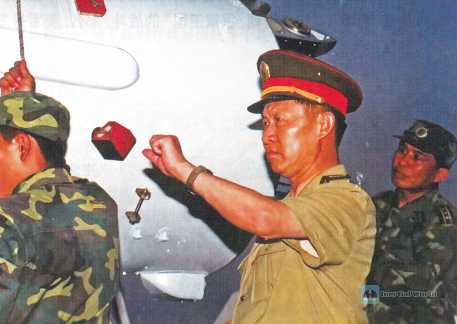
As an excellent commander, Yang Yegong also personally participated in the formulation of training models and the development of training equipment. In the past, in the training of the troops, due to the high cost of live ammunition firing, only a few firing units had the opportunity to be tempered, and most training subjects could only be simulated operations, and the use of computer simulation to organize training was inconsistent with the situation of field training. The live-fire firing capability of the troops could not be tested and improved. In order to take into account the two training requirements of close to live-fire firing and low cost, and to solve this bottleneck that restricted the development of combat effectiveness, Yang Yegong consulted dozens of missile launch technical materials at home and abroad. After repeated comparisons and demonstrations, he designed and organized relevant technical personnel to successfully develop a "scaled flying missile" that can simulate live-fire firing and is low-cost, and personally wrote the corresponding operating procedures. This achievement effectively improved the live-fire firing capability of the troops and was fully introduced into the training of the troops. A head of the Military Commission highly praised this when he inspected the base in April 2003. Yang Yegong promoted the combat effectiveness of the troops with a rigorous and meticulous work style, and led the troops to complete various military exercise tasks with high standards. He also extensively studied the knowledge of combat applications, and designed several new camouflage modes that better solved the problem of position camouflage. During his tenure as commander, he directed five scientific research results, three of which won the Military Science and Technology Progress Award. He also wrote more than 30 research articles that were valuable to the construction of the troops. Until the last few months of his life, he took the lead among the members of the Standing Committee of the Party Committee of the base to participate in the postgraduate study of the Academy of Military Sciences. He still finished his graduation thesis entitled "Issues to be Grasped in Establishing a Joint Operations Command Organization" while lying on his sickbed. At 3 a.m. on July 2, 2004, General Yang Yegong died in Beijing at the age of 59 due to illness. He devoted his life to my country’s missile industry and fought until his last breath. In 2005, the Central Military Commission posthumously awarded Yang Yegong the honorary title of "Model Commander Who Faithfully Fulfills His Mission"; in 2006, with the approval of the Central Military Commission, Yang Yegong was listed as a model of the whole army. In the portrait, he was smiling, as if he was still silently caring about me. The combat effectiveness of the army.
Conclusion
It is under the leadership of a group of outstanding commanders represented by Yang Yegong that the combat effectiveness of the Second Artillery Force has been rapidly improved, and the military struggle preparations have been effectively completed, making significant contributions to safeguarding the security of the motherland and the happiness and peace of the people. Today, the Second Artillery Force has been renamed the "Rocket Force" in the most extensive and profound national defense and military reform since the founding of the Republic. Under the leadership of the leader, it has revitalized political discipline, reshaped organizational forms, reorganized the struggle pattern, reconstructed the construction layout, and rebuilt its style and image, achieving a complete transformation and rebirth. It has been built into a lean, efficient, and nuclear and conventional strategic force. Looking back at the "Entrepreneurship Gate", not forgetting the way it came, the officers and soldiers of the Rocket Force in the new era are moving forward along the footsteps of heroes and models, and are writing a new chapter in the cause of strengthening the army with a more high-spirited attitude.


